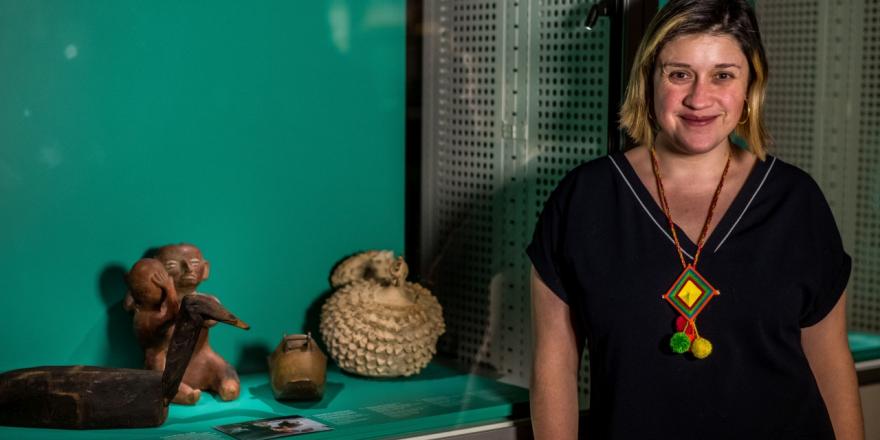Dear Cabinet No. 0.25, if your object could speak, would they tell History (with a capital letter)? Or would they tell stories? Would they speak about why they have been chosen for the sake of humanity’s Heritage? Or would they tell the story of a Bogotanian family around the fireplace during the time of the blackouts? It was as if my childhood memories had been catalogued, numbered and preserved in a museum’s deposit in Antwerp. I felt like the objects had chosen me to be their storyteller and not the other way around.
The doors of cabinet No. 0.25 were open to me as I was invited to the city’s patrimonial deposit at the Hessenhuis to choose one object that would speak to me. My mind was set to look for something from Antwerp city as I was engrossed to write about my experience in this city. But then there was this cabinet.
On a grey metallic shelf lied the golden iron shoes we had played with as children so many times, never knowing what they were for; the wooden duck my mother had on the side table; the pre-Columbian figures my father had given her as a gift after giving birth to us (and we always felt the discomfort that those figures were brought out from their original place); there were the bulls with the cross my sister brought from Peru, and we all had decorated together; and the ceramic chicken from my mother’s funny chicken collection. My childhood, my families stories in that living room, all of it lied catalogued, numbered and preserved in a Museum’s deposit at the other side of the ocean, as if I had entered our own personal Vargas- Villaveces Museum.
As my eyes gently touched the objects that had always been part of our house, the memories danced in my head again. Suddenly it was the nineties in Colombia, the period of “Los apagones” (the blackouts). The country had suffered from extreme dry season and was obligated to cut electricity for everyone around four o’clock until next day. I must have been around 5 years old at that moment when I would come home from school and watch the “Ingalls family” and just before the credits appeared, the TV turned itself off leaving the melancholic white spot. Since there was no electricity, life made us go back to an important home element: the chimney. My uncle was an architect, and he had built our house with what my parents called “The perfect chimney”. There was never smoke coming out because it was made with the perfect angels, and they had built a rotating grill on the left side to cook food. I remember my parent’s friends measuring the chimney to copy it on their own houses. Later the same measurements were made to the chimney in our little house in the mountains, and all these elements became the decoration of our fireplace.
During the blackouts, the family gathered around “The perfect Chimney” to cook soup on a huge black ceramic pot. For some months, we were deliciously obligated to return to the concept of the tribe around the fire. These elements (the iron shoes, the duck, the pre-Columbian statues, and the bulls) were the witnesses of my happier childhood memories. When our house in the 116-street got sold, my parents bought a piece of land in a mountain and built there again. The measurements of the “perfect chimney” were taken from our old house and made again, and all these pieces were all brought together once more to the new “perfect chimney” as if they belonged together and needed each other to survive. Until this day, these objects live in our house in the mountains along with the ceramic bulls my sister brought and were placed in the roof for protection and welfare.
It was at that moment, in that place, at the Hessenhuis where I asked myself if there is such thing as fate, whether I was supposed to choose this objects or whether they have chosen me.
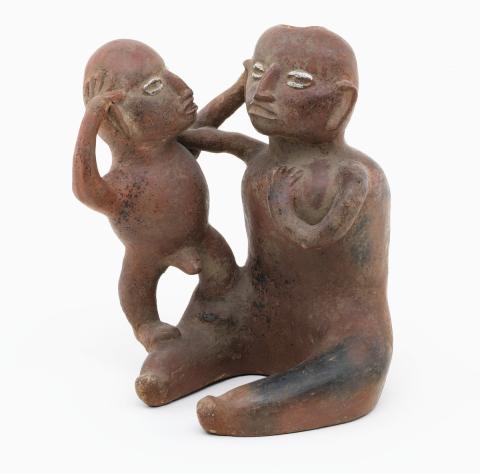 | 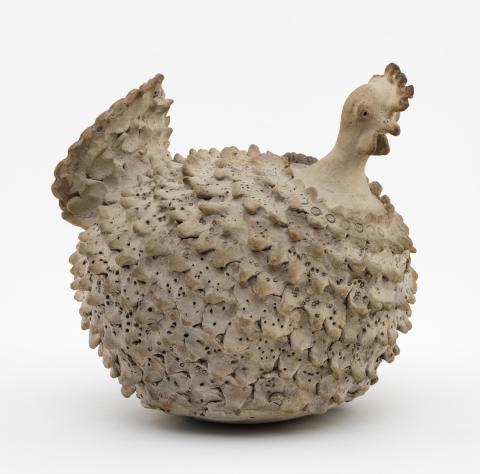 |
Beeld van een moeder en kind, vermoedelijk een grafgift Maker onbekend, Colima | Beeld van een kalkoen Maker onbekend, Maya |
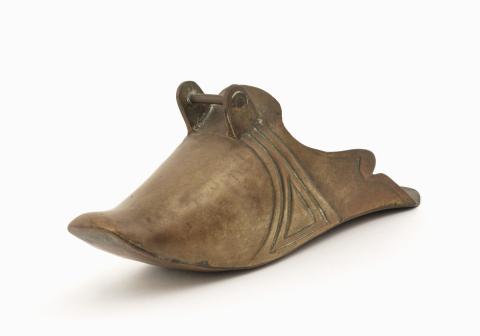 | 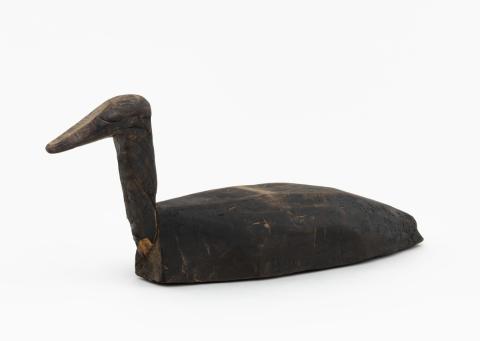 |
Stijgbeugel van conquistadores uit de Spaanse koloniale periode Maker onbekend | Lokeend voor gebruik bij de eendenjacht Maker onbekend, Cree |


